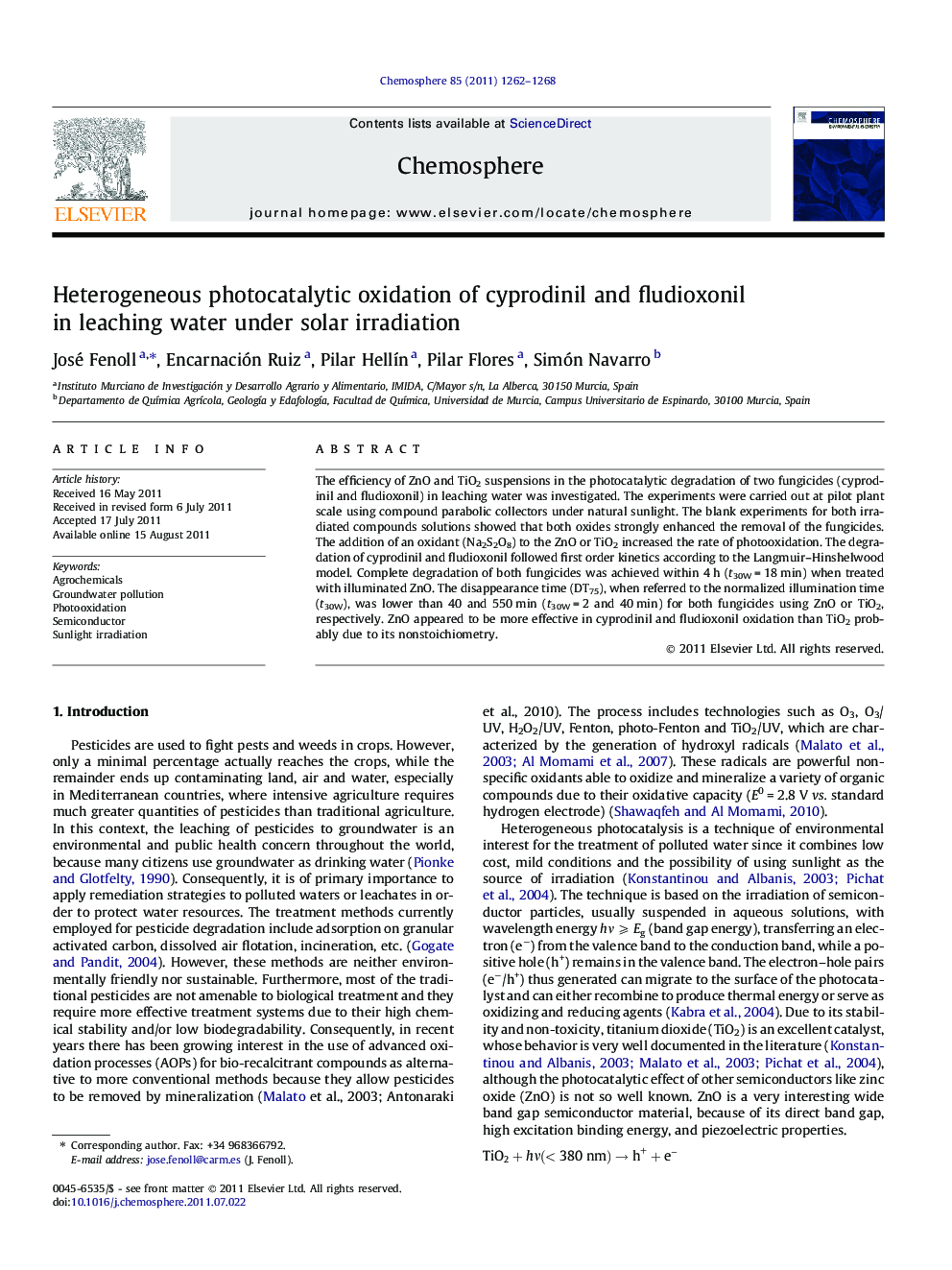| Article ID | Journal | Published Year | Pages | File Type |
|---|---|---|---|---|
| 4410114 | Chemosphere | 2011 | 7 Pages |
The efficiency of ZnO and TiO2 suspensions in the photocatalytic degradation of two fungicides (cyprodinil and fludioxonil) in leaching water was investigated. The experiments were carried out at pilot plant scale using compound parabolic collectors under natural sunlight. The blank experiments for both irradiated compounds solutions showed that both oxides strongly enhanced the removal of the fungicides. The addition of an oxidant (Na2S2O8) to the ZnO or TiO2 increased the rate of photooxidation. The degradation of cyprodinil and fludioxonil followed first order kinetics according to the Langmuir–Hinshelwood model. Complete degradation of both fungicides was achieved within 4 h (t30W = 18 min) when treated with illuminated ZnO. The disappearance time (DT75), when referred to the normalized illumination time (t30W), was lower than 40 and 550 min (t30W = 2 and 40 min) for both fungicides using ZnO or TiO2, respectively. ZnO appeared to be more effective in cyprodinil and fludioxonil oxidation than TiO2 probably due to its nonstoichiometry.
► Environmental contamination due to cyprodinil and fludioxonil leaching. ► Water decontamination through solar photocatalysis using ZnO and TiO2 suspensions. ► Better results using ZnO as photosensitizer.
